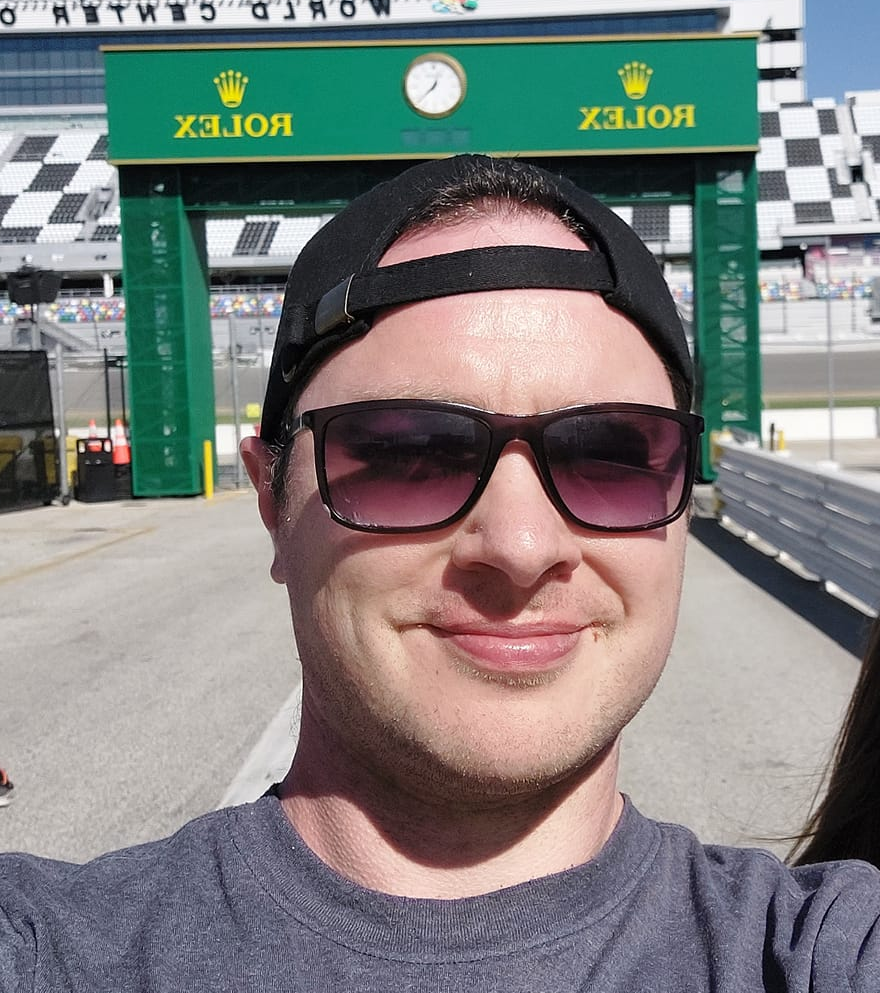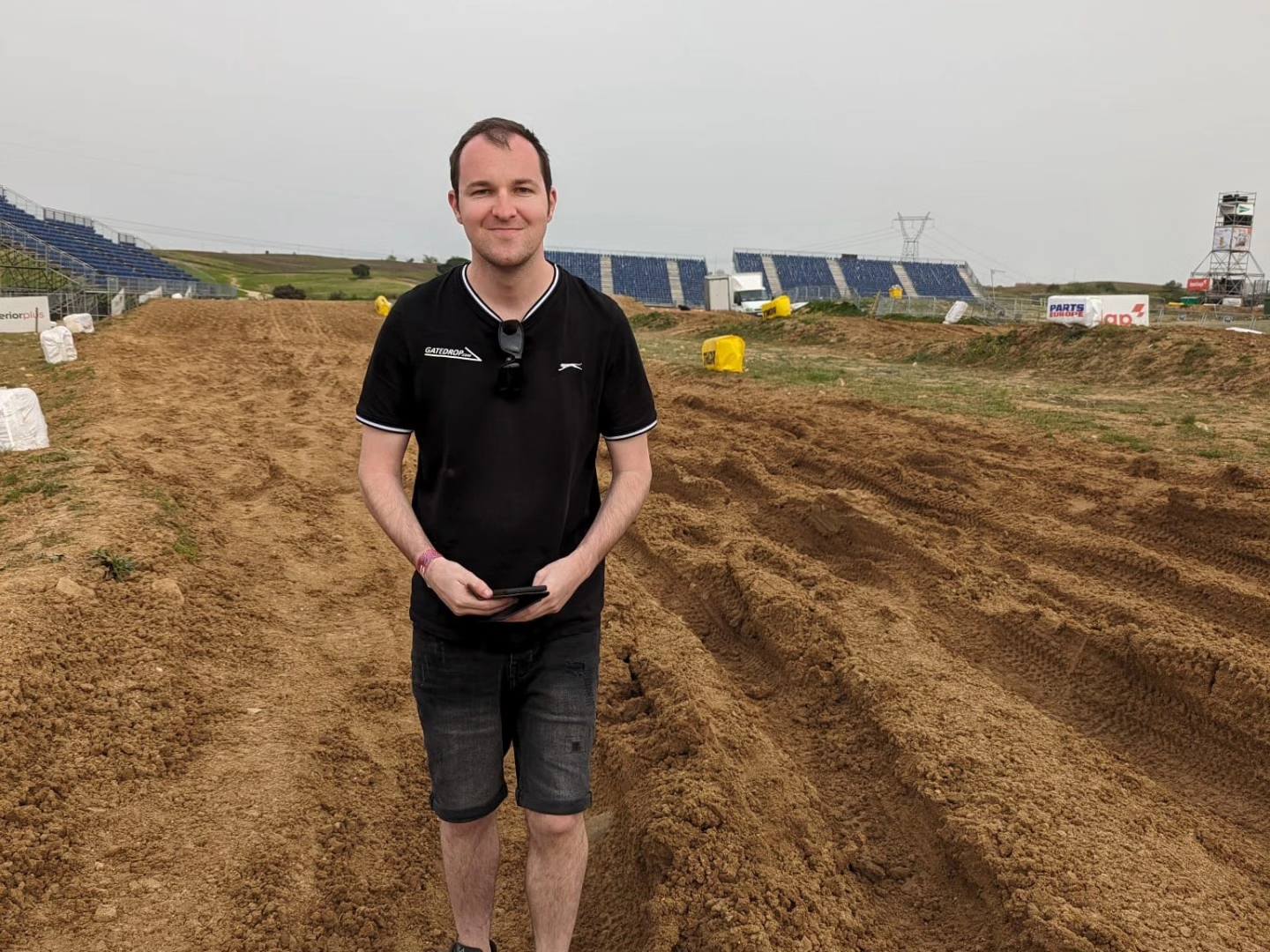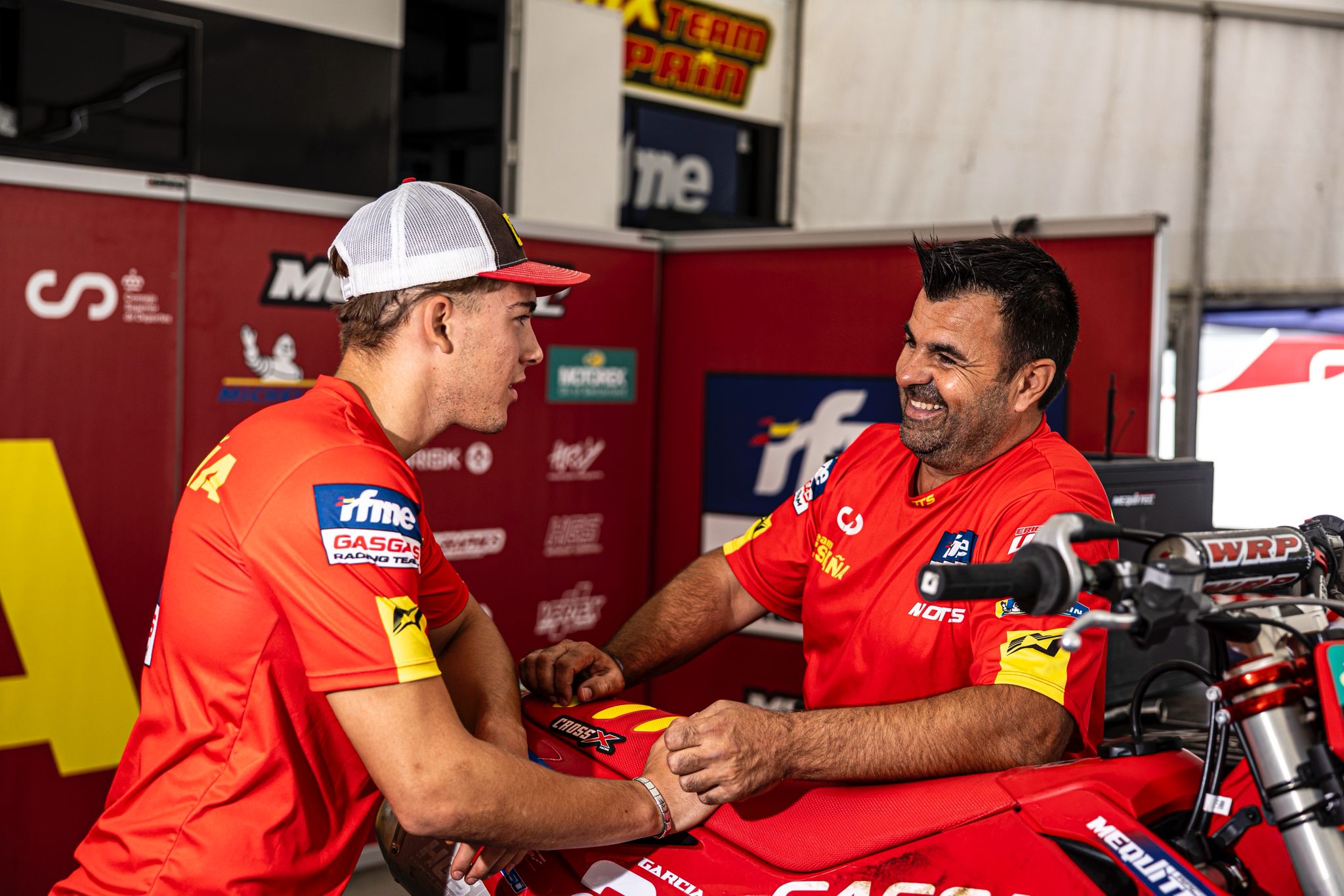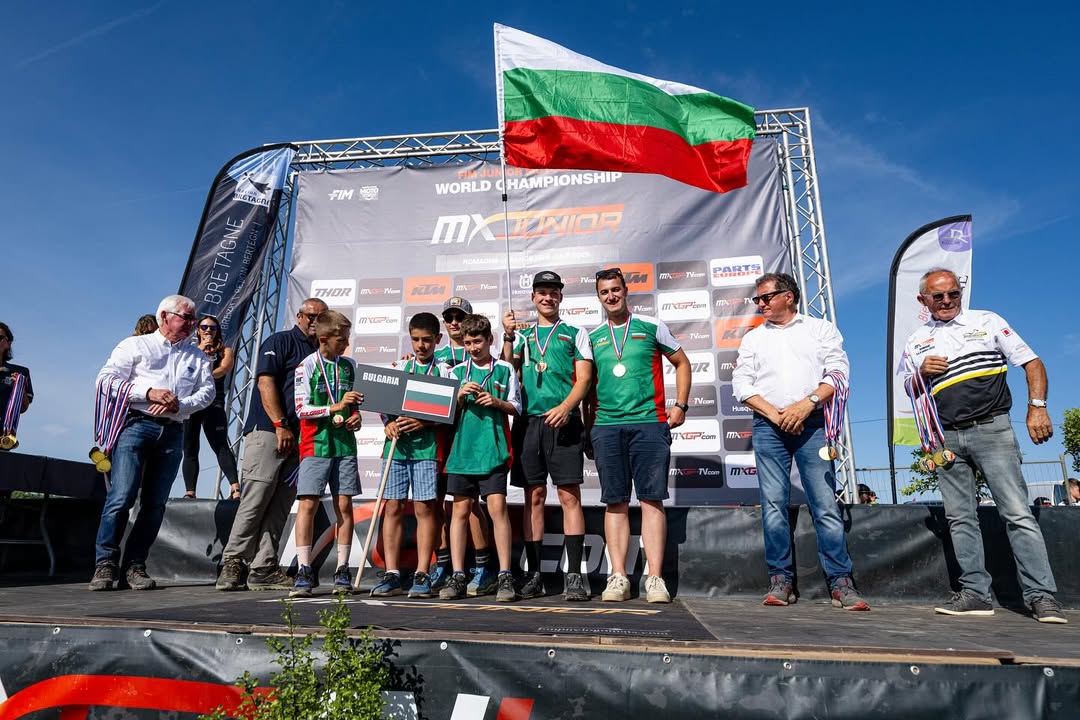Accomplished rider, respected team manager, Livia Lancelot stepped away from racing at the end of 2022, after one final stand on the World Supercross stage. What has she been up to since? What were the real reasons behind her departure? What does she take away from her time with Honda 114? What went on behind the scenes during her collaboration with Giacomo Gariboldi? Kevin Frelaud had questions—Lancelot had answers.
Opinions, truths, memories, behind the scenes. Portrait of a fulfilled woman: one eye in the rearview mirror, the other on the road ahead. Chapter 1. Mic on.
Livia, tell us what you’ve been up to. It’s been three years since you left the paddock. Last we heard, you had plans for a riding school and a bike workshop. What does your daily life look like today?
Lancelot: The project came to life—and it’s doing very, very well. I run a small riding school based mainly in Saint-Vincent-de-Tyrosse, alongside Charles Pagès, who took over the track and brought back the well-known “Tyrosse Academy.”
Outside of school holidays, I’m there every Wednesday. I have a morning group with the younger kids—on 65s and 85s—along with some amateurs and vets who occasionally join in. In the afternoon, I run an advanced group with strong regional riders who want to improve, as well as the local top talents who dream of going pro one day.
During school holidays, since the kids have more time, I travel around to different tracks in the region. We also mix the groups more often so the younger ones can see what the older ones are working on, and we train on various tracks, etc.
In addition to the school based in Tyrosse, I also coach a few riders full-time. Félix Cardineau, for instance—I already worked with him back when he was on an 85. There’s also Tylan Lagain. And in August, a young Australian rider is coming over for six months. Then in September, I’ll also be working with a young Portuguese rider who’s competing in the EMX250 series.
During the week, I mostly focus on the more “professional” riders—not necessarily world-level, but close.
We’ve also got a workshop, which I run with Tom, one of the former mechanics from my team. Day to day, Tom takes care of bike maintenance and repairs. From time to time, I hand over riders to him—he’ll be managing the Australian rider, for example. He’ll handle his training, his bike, everything. It allows us to offer an all-inclusive, turnkey program.
I’ve lived here for 15 years, so I know pretty much everyone. When it comes to accommodations, we always try to help out and find affordable solutions for the riders, because we know how tough it can be to settle in a new place. I remember the first few times I went to Belgium—I got totally ripped off on rent. Everything was just that bit harder.
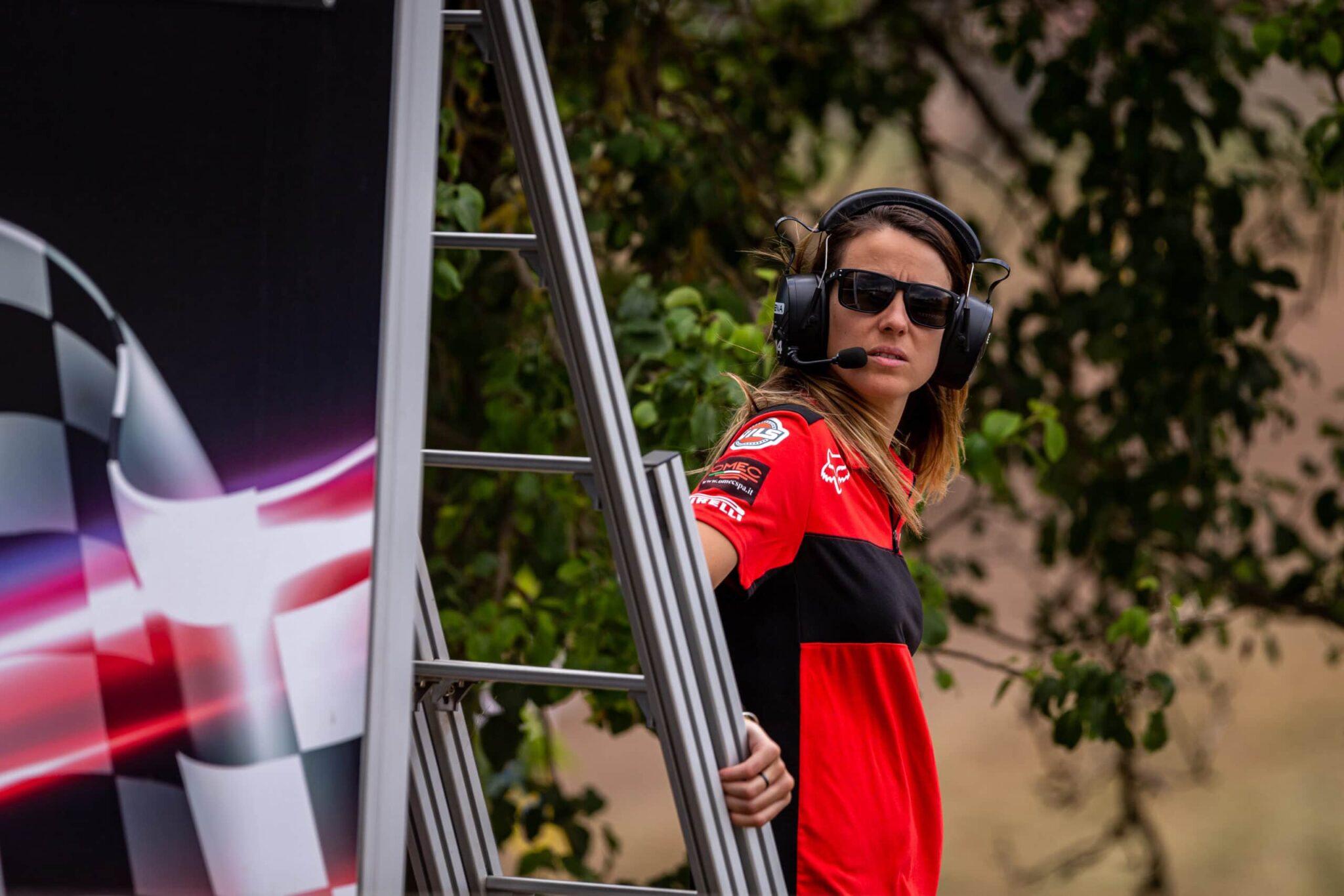
What’s your long-term vision? Are you aiming more at working with amateur riders, or do you see yourself moving toward something more professional, maybe even coaching top-level riders?
Lancelot: I’m doing exactly what I wanted to do: going back to the basics. If I stepped away from the Grands Prix and that whole world, it wasn’t to go back to it one day. Right now, I’m really enjoying working with the riders I have. I have fun with the young kids in the mornings, because they’re at that age where they just want to ride. You could take them out in the worst conditions possible—it could rain all day—and they’d still have a huge smile on their face… and honestly, that’s something I started to miss in the professional scene.
Helping riders progress toward the world championship is interesting, because that’s when they have the most to learn. Once they sign with Grand Prix teams, it becomes a little different. Most of the time, they have to relocate near the team’s base—unless you’re a future world champ in the making, in which case you might get more freedom. But let’s say 90% of riders have to move near their team, and most of their training is already handled and organized. So in the end, landing a coaching role in a GP team is difficult… and to be honest, I don’t want it. It would mean traveling the world 20 times a year again, and I just don’t want that anymore.
These days, there are coaches all over the place. So, in your opinion, what really separates a good coach from a bad one?
Lancelot: That’s hard to define. Yes, there are coaches everywhere—just like in any sport, and in any profession, really. When you build a house, there are good builders and bad builders. Unfortunately, you only find out once the house is finished [laughs].
It’s true that it’s not always easy to see the difference. I think it comes down to chemistry. Some people just might not click with me, but they might with someone else—and I totally get that. I’m 200% okay with my riders working with other coaches.
Recently, Valentin Teillet came to run a training camp in Tyrosse. Pretty much all of my kids were with him on Wednesday. I encouraged them to go, because I think it’s great to get new perspectives. They had a blast, and that doesn’t mean I’m going to lose clients. It’s up to each rider to weigh things, decide who they want to work with, listen to what’s being said, and make their choice.
Look at Philippe Lucas and Laure Manaudou—that was a duo that worked. She needed that kind of coach, and it worked with him. That doesn’t mean it worked for everyone else after. I think a coach has to be able to adapt to their riders. Not every kid has the same personality, and you can’t treat them all the same way.
A quick word on this transition you’ve made: you spent most of your life living a very different lifestyle than the average person—first as a GP rider, then as a team manager, constantly on the road. It seems like you were looking for something a bit more “traditional” in terms of lifestyle. Have you found it?
Lancelot: Yes, it’s something I had in mind already. It’s nice to travel the world and live that life—you know it—but it’s not exactly a “normal” life. It’s a life where you can’t really settle down or think about having a family. So slowing things down and finding a backup plan was already a goal. That’s how the idea of the riding school came about.
When we last talked, I had just found out I was pregnant, and that sped everything up. I had a little boy in May 2023. Now, I’m a mom, and I love the life I live. I didn’t stop the Grands Prix out of regret. I did it for my son, and I don’t regret a thing.
Well… the pace is actually crazier than when I was traveling the world [laughs]. My partner has two kids as well, so there are three kids at home. It’s definitely a hectic pace. But it’s real life. That’s what I’m discovering—the real day-to-day life of ordinary people. Honestly, being at the track these days feels like my little moment of peace.
I think I already know your answer, but let me ask anyway: if a great opportunity came up, would you consider coming back to the paddock?
Lancelot: No. Not for anything. That being said, I had some amazing years in the paddock—both as a rider and as a manager. I have really good memories from that time. But today, I’m lucky enough to watch my son grow up every day, and that alone would make me turn down any offer. Plus, the vision I have and what I would want to do in the paddock just isn’t possible anyway. So that’s that.
We’ll come back to that. Tell me, you were at Ernée for the GP—what brought you there?
Lancelot: First of all, I was really happy to see everyone again. I entered the paddock at 16—I know almost everyone… although that’s a bit less true now, because in three years a lot of new faces have arrived, both riders and mechanics. But I still know 90% of the paddock, and it was great to catch up with old friends. I still have some very close friends there.
At Ernée, I worked with Infront and the FFM. On Friday, we did what they call the MXGP Academy, where they invite about fifteen riders to ride on the GP track with instructors. I was with Alexandre Morel, who works with me at the Federation on the women’s project. We invited 15 girls with Infront and the FFM to give them a glimpse of what life is like in the paddock, what it’s like to be a GP rider, and to give them a chance to ride on the track on Friday.

I thought working with the federation on the Women’s Motocross (MXF) project would naturally be the next step for you after your riding career. But it turns out you’ve actually been involved for quite a while already.
Lancelot: Yes, it’s been about ten years now. The federation has always supported the girls. From the moment I started racing Grands Prix and needed help – whether it was for guidance or logistics – they were always there to back me up. They always gave me a hand. Then, as I got older, they started organizing training camps for the girls to prepare for what comes next.
Together with the federation, we run what we call scouting camps. We look at the Minivert results, the French Sand Championship in the 85cc class… We try to spot as many girls as possible who are racing – that’s the foundation of our scouting process.
Then we invite them to two or three training camps throughout the year. We put them on the bike, have them do motos, timed laps, some fitness training too. From there, the ones who show both the level and the motivation – and who might eventually want to go pro – we try to integrate them into the French national teams with the boys.
Our best example right now is April Franzoni, who’s starting to put in solid results in the World Championship. April is what you could call a 100% product of the system. She came through a lot of scouting camps with us. Now, she’s part of the French 250 team alongside the boys, and she joins them for all the winter training camps. And that’s huge.
In your opinion, what are the next steps that need to be taken for the French Women’s Championship? We’ve talked about this before – there’s a solid front group, but a big gap to the rest of the field. Most of the girls in the MXF aren’t really prepared to ride GP-level tracks either, since they’re mostly racing on smaller circuits nationally. So what do you think needs to change for MXF?
Lancelot: It’s a really tough topic. Right now, there are very few girls with the level to compete in the World Championship. Putting the Women’s French Championship on big tracks like Saint-Jean, Ernée, Villars, or Lacapelle might benefit the top riders, but it doesn’t reflect the overall level of the series. I think the championship should stay the way it is, because, truth be told, it’s working. There are qualifiers at the start of the season, lots of girls racing the full series, and there’s even a separate ranking for the 125cc youth class. On paper, it’s a well-run championship.
I think it’s up to the two or three girls in the MXF who are ready for the world stage to find ways to keep progressing. That’s what we try to explain to them: they need to train and race with the boys as much as possible. One of the biggest mistakes girls often make is this: they race with the boys in the Minivert class, but they move up to 125cc quickly so they can race the French Women’s series with the other girls. From that point on, they no longer race with the boys. Often, their parents say it’s too dangerous in the regional leagues, or that they’re not good enough for the Junior class, and so their progression stalls.
With Alexandre Morel – who works with me on the MXF project – we usually advise them to stay in the 85cc class as long as possible, to do the full Minivert program, compete in the French Espoirs Championship, and train as much as they can with the boys. And when it’s time to move up to 125cc, to at least try the Junior class, even if the gap is huge. At the very least, they should stay in the regional leagues with the boys – most leagues now have a 125 Junior category.
Women’s motocross is still a young sport. I raced the first Women’s World Championship in 2005. That’s only 20 years ago! Even without getting into the male/female performance gap, 20 years is nothing compared to the men’s side or to other women’s sports that have been around much longer. We have to give the girls time to develop, while also giving them the right tools. And they need to understand the amount of work it takes to get there.
That said, it would be great to have the MXF rounds held alongside the Elite Championship once or twice a year. That would give them some media exposure, and it would really help them. Especially since participation is strong. Same as in the World Championship, actually – there are more girls than boys on the entry list!
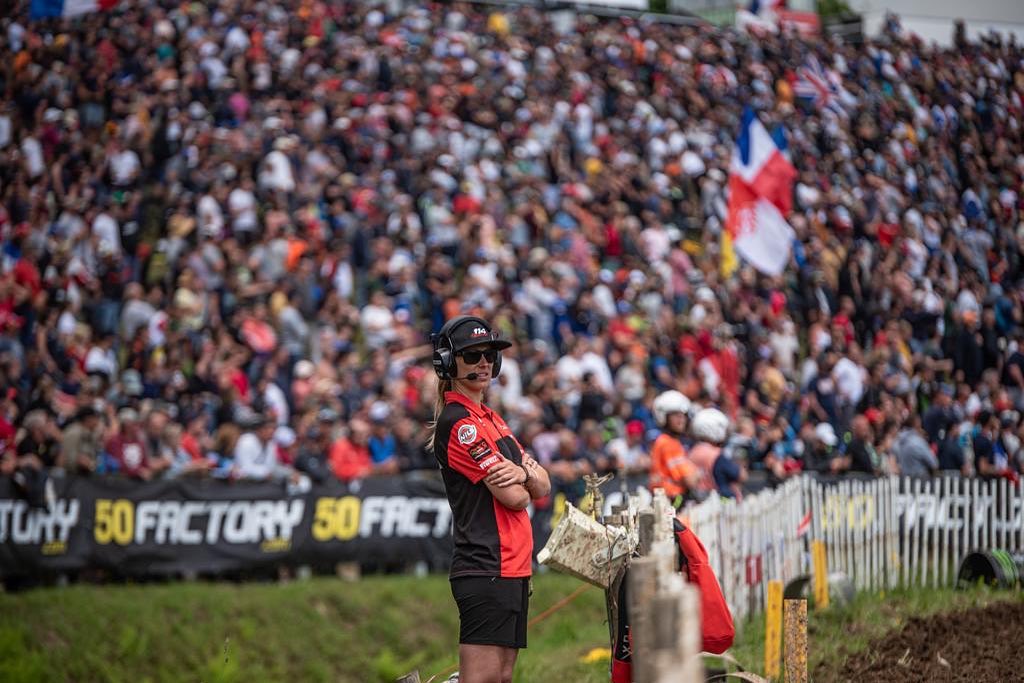
That’s true. Let’s talk about Honda 114. Back then, you were hoping to get official support from Honda, which you’d never had. Two years after your departure, the Japanese re-launched the factory program in MX2 with Zanchi. Now there are two factory MX2 riders. When Honda announced its return to MX2, you were the first person I thought of. When you heard about it, weren’t you a little bitter?
Lancelot: Not at all, because I know I wouldn’t have gotten that factory contract anyway, even if I’d stayed. That’s just how it works: if you don’t have money to put on the table, you don’t get a seat — even if you’re doing the best job in the world. Sure, Giacomo Gariboldi could have offered me a role managing the MX2 team, but it never would have been the “Factory Honda 114” team.
That’s why I have no regrets about walking away — because I understood that very quickly. Today, to get a factory deal, you need to be able to promise the manufacturer that you’ll buy three haulers, offer a dream workshop, and so on. Then they give you the factory bikes and parts. That was never going to be possible for me — and frankly, I wasn’t interested. It’s not the way I see things, not how I operate.
Actually, the thing I “regret” the most isn’t seeing the Japanese return to MX2 with factory bikes. It’s more about the WSX. Even if the World Supercross didn’t work out as expected on paper, to me, it represented a chance to go solo — to make my own choices, and my own mistakes. But at least I would have been the one calling the shots.
Because in the end, as you mentioned, with Honda 114, I was always under the thumb of Giacomo Gariboldi. I had to go along with his views, his ideas. Don’t get me wrong, he had plenty of good ideas. Today, Giacomo holds a position that a lot of team managers would dream of — I’m not criticizing his choices. But when we disagreed, I had no choice but to follow his lead. And that’s not really in my nature. The issue is that when you’re not the one making the decisions, when the idea didn’t come from you but you’re left to deal with the fallout — that’s tough. It’s something I struggled with.
WSX also had the advantage of not needing a massive financial commitment. No need for huge infrastructure, no need for trucks — none of that. It was much simpler. But ironically, that’s where I really got hit hard. I realized that even in that context — where those big budgets weren’t supposed to be necessary — if you didn’t have the biggest wallet, it still didn’t work.
It’s a simple story. I knew I wanted to have a child. For me, World Supercross was perfect: six races a year, it fit well. When the idea started forming, I talked to Giacomo out of respect. He was the one who had allowed me to get to that position, who brought me up with 114, and I’m grateful for that. So I told him about the project, and he said, “No, I’m not interested. It won’t work anyway.” In the end, he wasn’t wrong. But I replied, “Okay, then I’m asking for your permission to go solo, because I’m more interested in that than continuing the team in MX2.” The team had become financially difficult. We were struggling more and more, the Japanese still hadn’t committed to giving us good equipment… Giacomo said, “Alright, go ahead.”
Then came the moment to sign the contract with the WSX promoters from Australia. They said to me, “Yes, but actually, we prefer to give the contract to Giacomo. Because he can bring HRC on board.” Giacomo, unsure of whether WSX would succeed or not, figured it was better for him to be in the mix than me. So the WSX contract was signed in his name, and I was left in a mess. I had already committed to riders, sponsors… I still did the first year — or at least part of the season — then I stopped after that.
I don’t feel bitter, though. Let’s just say I learned — the hard way — that there’s a hierarchy in place. And even if you’re motivated and good at your job, you’re not going to tip the scales that easily.
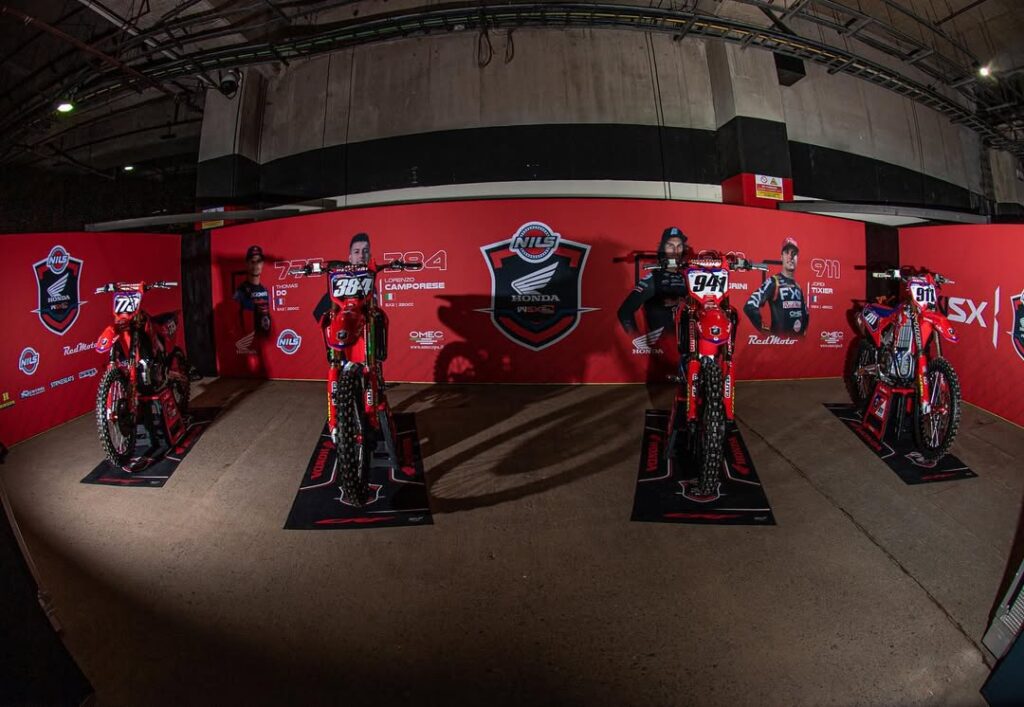
Looking back now, how do you view your WSX experience? Were the promises kept?
Lancelot: Definitely not. Honestly, I couldn’t even tell you how many races are still on the calendar — if any — or which riders are still involved; I haven’t followed it at all. But the fact that no one’s talking about it probably says a lot, right? [laughs] Honestly, I feel like even the Indian championship did better. No, the promises weren’t kept. They didn’t manage to do what they set out to.
I think it comes back to what I said earlier: there are people in place who’ve been around forever, and you don’t shake up the system just like that. The original idea was great: a true World Supercross Championship, races in big stadiums around the world… I still believe that’s what our sport needs. Today, you have Supercross in the U.S. on one side, and Motocross in Europe on the other. But I’m sure there were people trying to sabotage it — I have no doubt about that.
In our last interview in 2022, we talked about Lotte van Drunen, who was about to make her debut in the Women’s World Championship in Turkey. Three years later, she’s in contention for a second world title. Back then, you said: “I hope Lotte succeeds, because she could completely revive women’s motocross and bring attention back to a dying championship.” Do you think the women’s world championship has been revived thanks to Lotte?
Lancelot: No, I don’t think it has, not really. For starters, she doesn’t dominate the way she should. Even last year, she didn’t win all the races easily — Daniela still managed to take quite a few motos from her. I kind of expected that, but it’s tricky to say so out loud because people assume you’re jealous, or bitter, etc. But that’s not the case at all. I truly wish her the best — let her win twenty world titles if she wants, and get great results racing with the guys. I have no regrets about my own career, so it’s not about that.
But considering everything she’s done in 85cc, 125cc, and all the support she’s had behind her, Lotte should be absolutely dominating the Women’s World Championship. And that’s not happening yet. I also don’t feel like it’s brought new energy to the series.
With everything she’s achieved at her age, Lotte should be a full-on superstar! She’s done amazing things for a girl — scoring points in the EMX125 at Lommel, for example. I never would’ve dared race the EMX125 back then — I struggled just to qualify in Juniors. Even Kiara Fontanesi barely ever raced against the guys. But despite that, Lotte’s popularity hasn’t really taken off. And that’s a shame, because it would have really helped women’s motocross.
So, in the end, isn’t the rider who surprises you the most in the women’s world championship this year actually Kiara Fontanesi? Over thirty, two kids… and still in contention for the title.
Lancelot: Well, surprise me? Not at all. Because I know Kiara well — I raced against her for years — and I know she never gives up. I’m really happy for her. We were never best friends, which is normal, since we fought every weekend on the track. But I’ve always had a lot of respect for her, even more so today.
Showing that level after so many years is incredible. Yes, the life of a top-level athlete is glamorous and obviously better than working in a factory, let’s not kid ourselves. But there are really tough moments. When you wake up in the middle of winter, you’re at Lommel because you have to train in the sand, it’s 3 degrees, raining, and you’re doing 30-minute motos — that’s no picnic. On the flip side, when it’s midsummer in the southwest, 35 degrees, and the tracks are dustier than the highway because it hasn’t rained for three weeks, with no ruts and you have to race in a heatwave — that’s brutal too. That’s the side people don’t see much, but it’s real.
Kiara is still determined to push through all that after all these years, and honestly, respect. Doing all that with two kids… I won’t even get into it. Managing the pace with children at home is tough. What she’s doing is amazing.
That’s also why I’m surprised Lotte isn’t dominating more. With all her background, she still loses motos to Kiara, who’s over 30 and has two kids. Normally, Lotte should be way ahead.
Lotte is a machine built to win from the start: involved parents, fitness coaches, top-notch bikes, adjusted school schedules… She’s always had everything to succeed. Which makes me think that today, her room for improvement isn’t that big anymore.
I remember telling her trainer at the time to be careful: yes, Lotte was very strong and fast, and it was clear she would be world champion. But even at 16, I felt she was tired, like she’d done too much too soon. She also gets injured often — and we don’t even know everything, because at that level, you only talk about injuries when you have no choice.
You worked with Hunter Lawrence in 2018. What the Lawrences are doing today in the USA is remarkable. Of course, there’s a lot of talk about Jett, but if Jett wasn’t there, we’d be talking about Hunter… Back then, did you see anything that indicated their career would take this trajectory?
Lancelot: For Jett, absolutely, 200%. He weighed 30 kg soaking wet and already had that spark. When I had Hunter on the team, Jett was always with us. He had a clear hunger to succeed. Hunter and Jett were hard workers. Their mentality was: “We’re here for a reason, and until we get it, we’re not going home. Anyway, we don’t have a home anymore, so problem solved.”
They had a real mindset, a real drive to succeed. They were well-behaved kids, did some stupid stuff, but they were young. Their dad was nice and down to earth. I didn’t really know their mother or the third brother who stayed in Belgium. Jett and Hunter had all the ingredients to make a good mix. They managed to blend it well, but from the start, you could tell it was promising.
Originally, instead of Hunter, we were supposed to sign Jed Beaton that year — who’s also Australian. But in the meantime, Hunter was left without a ride, with a contract signed at Geico for the following year. So Giacomo Gariboldi had the idea to approach Honda and say: “You have to make an offer to Hunter so he can ride the bike for a year before going to Geico.” That was clearly the steal of the year. Hunter had nothing, I don’t even know if he had a salary at the time. Giacomo was sharp. The Lawrence family was in a bind, and we ended up seeing Hunter join the team. For us, it was both good and not so good.
It was my first year managing a team of that size, the first year of team Honda 114, and we didn’t have the capacity to support a rider at Hunter’s level. Suddenly, we had a rider aiming for the world title. We would have been better off signing Jed Beaton and starting more calmly, I tell you [laughs]. Because we really struggled the first year with Hunter.
Back then, the team 114 workshop was the same workshop I had when I was still a rider with my small women’s team. It was tiny. We signed Hunter while there were only four of us on the team: me, a chief mechanic, and two mechanics. So four people managing two riders, since Bas Vaessen was also on the team. The race mechanics were also the training mechanics; we did everything from A to Z. We started from scratch, with no experience, no parts stock — we had to build everything from nothing.
In a team, you need — at minimum — a training mechanic, a race mechanic, a chief mechanic, someone managing coordination and training, a team manager, an owner, etc.
Honestly, it was intense to suddenly have a young rider like Hunter with world title ambitions. It was aiming way too high for the actual situation. We had zero factory support, just some backing from Honda Europe with bikes and a parts budget. But with that, you don’t win Grand Prix’s.

